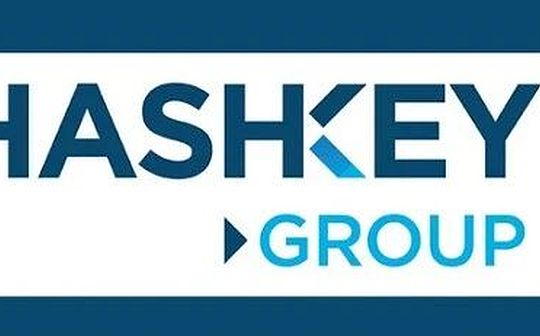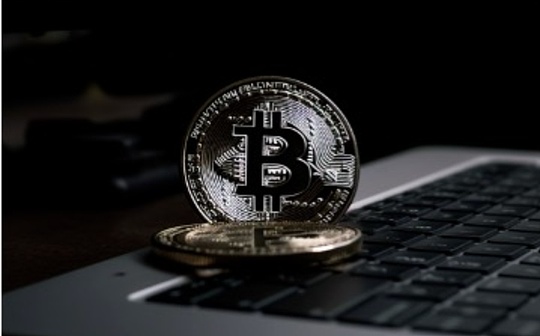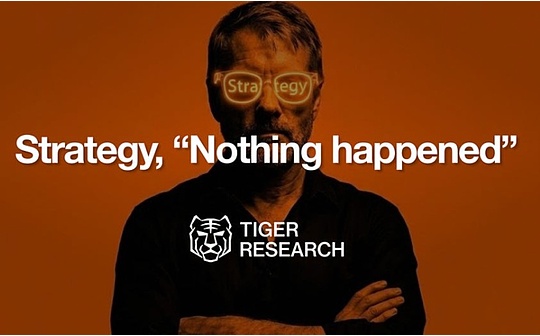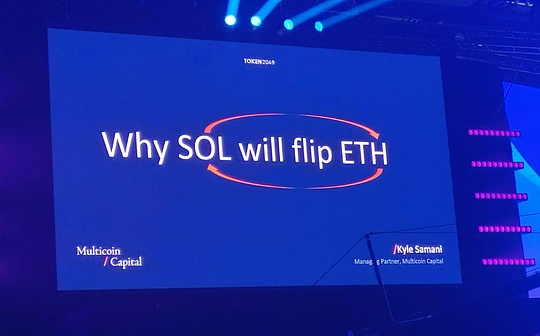
Speaker: Kyle Samani, Multicoin Lianchuang Compiled by: Shan Oppa, Bitchain Vision
With the rapid development of blockchain technology, Ethereum has achieved great achievements as a leader in the industry.However, after 9 years of development, EthereumIt took 5 years to determine the expansion plan, and another 7 years to complete the transformation from Proof of Work (PoW) to Proof of Stake (PoS).Ethereum has never been clear about what it wants to be.The expansion plan is constantly changing, without a clear direction.
Compared with Ethereum’s confusion, Multicoin Kyle Samani delivered a keynote speech at the Token2049 conference held on September 19, “Why SOL Will Flip ETH” full of expectations for Solana’s future.The entire community has revolved around a shared vision—“Decentralized Nasdaq”Gathered together, everyone is heading in the same direction.Bitchain Vision has compiled the content of Kyle Samani’s speech as follows for readers.
The following isKyle SamaniFull text of the speech (subtitle added by the editor):
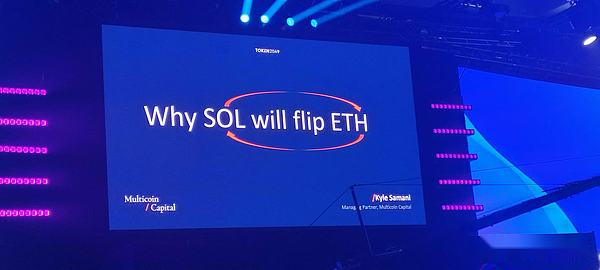
Good morning everyone!I am Kyle Samani, Co-founder and Managing Partner of Multicoin.Today I will discuss why we think Solana will surpass Ethereum.Some may already agree with this view, some may find it too radical or think it is unlikely to happen.My goal is to get everyone to at least rethink the drivers.
Today’s speech is divided into three parts.First, I will briefly review the history of Ethereum because it is very important to understand its current state and problems.Next, I will talk about why Solana is in a favorable competitive position.Finally, we will analyze some key metrics together that show that Solana has surpassed or approached beyond Ethereum, which are on-chain data that Multicoin is very concerned about.
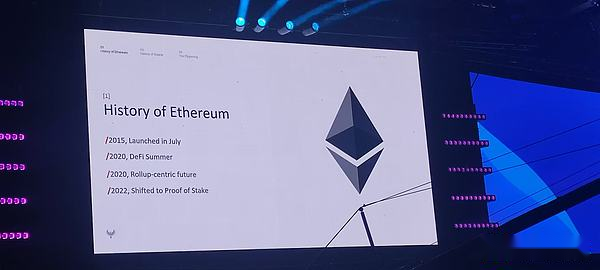
Before I start, I need to make two legal statements.First, today’s remarks only represent my personal views and have nothing to do with Multicoin.Second, the content of this speech does not constitute investment advice and should not be regarded as an offer for Multicoin investment advisory services.
The history of Ethereum
Now let’s talk about the history of Ethereum first.Ethereum has been around for 9 years and it was officially released in July 2015.I think this is very critical and will be emphasized repeatedly today.Ethereum has been around for 9 years and has enough time to solve the problems it faces and determine its own direction, which I will discuss in detail later.

So, what happened in the past 9 years?I think there are three very important things.First, the rise of decentralized finance (DeFi) has become the most important application of blockchain.Although DeFi has developed some developments before 2020, the real explosion is in the DeFi “summer” in 2020.This has been five years since Ethereum was released.
The second big thing is that Ethereum decided to adopt a roll-up-centric expansion roadmap in October 2020, which was made several months after the EIP-1559 update.However, one obvious problem with the roll-up roadmap is that it is not DeFi friendly, leading to problems such as cross-chain bridges and network fragmentation.They announced this roadmap just two months after DeFi’s “Summer”, and the impact is obvious.
The third key turning point is the shift of Ethereum from Proof of Work (PoW) to Proof of Stake (PoS) in 2022.It is worth noting that the Ethereum community had this plan as early as before the main network was released in 2015, but it took 7 years to realize it.This shows that Ethereum is moving very slowly and has been lacking in a clear direction.
Next, I want to briefly talk about the expansion roadmap of Ethereum.To be honest, this roadmap has been changed many times, with the earliest solutions including concepts such as Plasma and state channels.If you remember, there were crazy ideas like Hyperledger at that time.Obviously, none of these have been achieved.In the end, it took them five years to formally decide to adopt a roll-up-centered roadmap in October 2020.
However, this roadmap is now questioned, or at least partly doubted.In recent public discussions, there are more and more questions about whether to expand L1 and whether to introduce multiple block proposals. These ideas are closer to the strategies of projects such as Solana, and are now re-entering the discussion on Ethereum.
We don’t know what decision Ethereum will make in the end, it may take 3 months, 6 months, or even 9 months to see the conclusion.But I want to emphasize that the roadmap formulated four years ago is now at least partially questioned and may even be completely overturned.Ethereum has been around for 9 years, but it is now back to its starting point. What is going on?
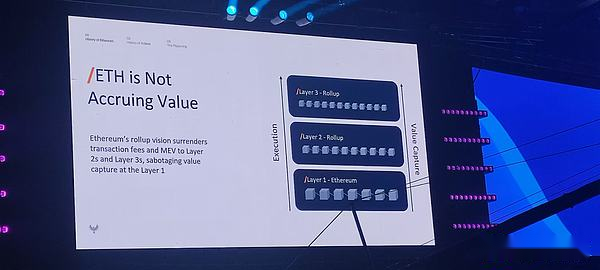
Before discussing Solana, I would like to mention one more thing:Ethereum is no longer the center of value capture.The roll-up-centered roadmap explicitly transfers transaction fees and MEV (maximum withdrawable value) fees from L1 to L2, L3 and even L4.Although this roadmap successfully pushed transactions to the L2 level, it also removed most of the value creation from the Ethereum asset.
Ethereum still has no clear direction
These people will tell you that you can still use Ethereum for data availability (DA), which is really true.But I will show in the next few slides that the value of DA is almost zero.There are enough DA available on Ethereum and elsewhere.People will end up saying that Ethereum’s value stems from “ETH is currency”, but that’s totally nonsense.This statement is essentially a circular argument and cannot be falsified. They just impose their beliefs on you and have no logic to deduce.
The touchstone for judging whether something is currency is simple: go to a coffee shop and ask them how coffee is priced.If they price with ETH, then ETH is the currency.If it is US dollar, then US dollar is currency. This is the standard for judging currency, and nothing else is standard.
L2’s transaction data

We can see the ratio of transactions shifted from L1 to L2 over the past three or four years.This is very obvious. Now almost all transactions are on L2, and more than 90% of transactions occur on L2.This is done as planned, they did achieve their goals, but what is the result?They have been talking about the so-called DA value rules.In fact, L2 is the one who makes money.
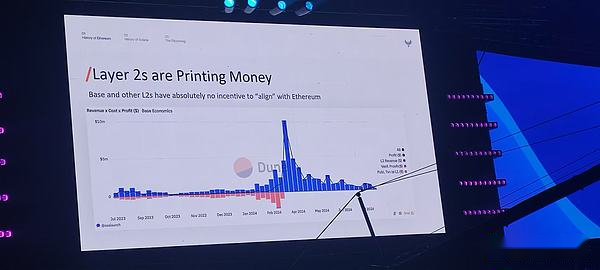
Let’s take a look at Base’s revenue and expenditure, which is currently the largest L2 in the main indicator.It is clear that Base earns about $1 million per week, while spending is almost zero.The reason for the expenditure is zero is that they only have to pay the fee to L1 for DA and may remain at this level in the future.

One thing I want to emphasize is that while people have been saying that L2 depends on L1, in fact, this chart clearly shows that they are actually opposite.Base’s purpose is simple, to generate profits for Coinbase shareholders, who want to maximize revenue and minimize spending.In fact, Base’s incentive mechanism is exactly the opposite of Ethereum L1’s incentive mechanism, because Base wants to minimize the fees it pays.If we look at other major L2s, such as Optimism, the chart shows almost the same situation, and Arbitrum also has the same pattern.In all L2s, this trend is consistent.
Ethereum positioning is blurred
I want to say it explicitly that Ethereum has never really made clear what it wants to be.

It was launched nine years ago as a “world computer”, but this concept has never been truly defined, and it has not even been clearly defined.Admittedly, I don’t think they have to define what “computer” is, it’s just a marketing term.But 9 years have passed, and they still haven’t told us what the platform actually uses.Although concepts such as decentralized finance (DeFi), Web3, and decentralized identity storage have emerged, Ethereum is currently presenting a mixture of these concepts. To be honest, it has become blurred and does not have a prominent direction..Even a few weeks ago, Vitalik and other members of the Ethereum Foundation publicly stated that DeFi was just a circular argument and suggested that everyone do something else with Ethereum.

This is good, and I hope Ethereum can do more.But the problem is that 9 years have passed and they still have not provided clear guidance and have not given any clear opinions.The lack of urgency and clear direction fills the entire system with negative energy.DeFi is the most important thing on blockchain, and you can see this on Ethereum, Solana, or other chains.When I heard someone say “DeFi is not important”, I just want to say, if you don’t plan to optimize DeFi, then tell us what you want to optimize.But they didn’t, because they themselves didn’t.
Let’s review:Ethereum has been around for 9 years, and it took 5 years to determine its expansion plan, and another 7 years to complete the transformation from Proof of Work (PoW) to Proof of Stake (PoS).Ethereum has never been clear about what it wants to be.The expansion plan is constantly changing, without a clear direction.They don’t know what they are optimizing.Because of this roll-up roadmap, they have actually transferred most of the value appreciation from ETH to L2, such as Base and other projects.
Meanwhile, Ethereum’s market value remains at around $300 billion, one of the top 40 assets in the world’s market value.However, the project still has no clarity on what it wants to be, and this structural problem is very obvious.Next, we will turn to Solana’s history for discussion.Compared to Ethereum, Solana has always had clear goals.
The Origin of Solana
Anatoly Yakovenko, founder of Solana, began conceiving Solana in 2017 when he was writing trading robots using Interactive Brokers, a US service provider, similar to the more advanced version of Robinhood.He found himself unable to get real-time market data from the New York Stock Exchange and Nasdaq, while companies like Virtu and Jump Trading can easily get it.He felt this was very unfair and believed that everyone should be able to obtain market data fairly and openly.

This inequality experience prompted him to develop Solana, with the goal of giving anyone real-time access to market data 24 hours a day, 7 days a week.The Solana system is designed to optimize the spread of information, and anyone with computers and networks can receive this data in real time.This vision has become Solana’s “Polaris”, guiding them to build a global, real-time decentralized exchange from day one.
While this process is much more difficult than expected, Solana began development in 2018 and eventually launched version 1.0 in 2020.Although they experienced many failures during this period, and problems such as network downtime and congestion often occur, they always adhere to this vision.Solana did not truly realize this vision until the 1.18 version upgrade in May 2023.This upgrade enables the chain limit orders, order cancellation and other functions to start running normally, and transactions can proceed smoothly, with almost zero fees.
What makes Solana successful is that they stick to this difficult and ambitious vision, although it has failed, the final user experience is excellent, and there is no bridging and fragmentation issues on Ethereum.In addition, Solana’s asset value has also increased significantly, and now generates $500 million to $1 billion in revenue each year, mainly from MEV (maximum extractable value).Solana’s success proves the power of concentration, and they spent six years turning their vision into reality.
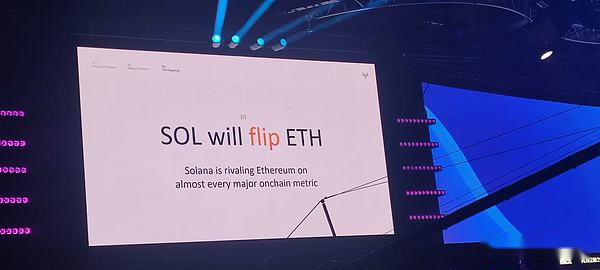
This is also why we believe that Solana’s market value will surpass Ethereum.Next, we will explore some key on-chain metrics that show that Solana’s performance is close to or surpassing Ethereum.
Beyond Ethereum
First of all, the blockchain system is essentially a financial system.We can see that Solana’s on-chain transaction volume has basically caught up with Ethereum in the past year, and sometimes even surpassed Ethereum.This is the most important indicator we think, after all, the core role of blockchain is to conduct transactions.

Next, let’s look at the second indicator: validator rewards.Solana has also caught up with Ethereum in this regard, and Solana’s validator rewards have even surpassed Ethereum in some weeks.
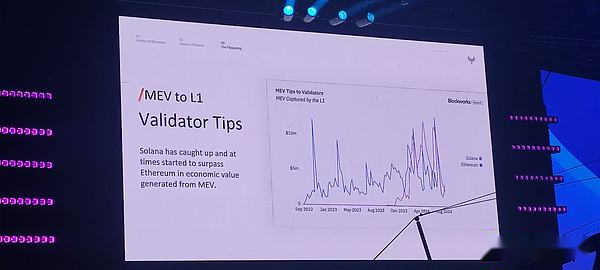
The last indicator is the amount of money transfers of stablecoins.Although Solana still lags behind Ethereum in this regard, its growth rate is amazing.About a year ago, Solana’s on-chain stablecoin transfers were 1/10 to 1/20 of Ethereum, and today it is close to half, indicating that funds are flowing more and more on the Solana chain.

If you believe these indicators will continue to maintain the same growth trend, it is reasonable to speculate that Solana’s market value will also grow in the same direction.
Structural Advantages of Solana
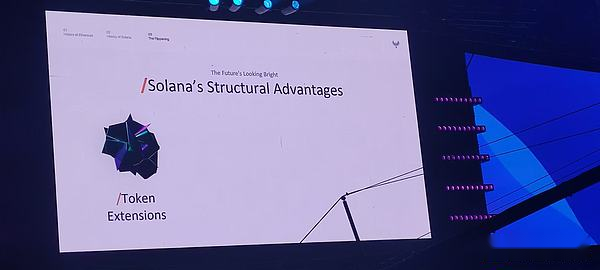
Next, I want to talk about Solana’s future and its three unique advantages, which are almost impossible to replicate by other communities, and are also the reason we are more optimistic about its future.
The first advantage is the token expansion function

The token expansion feature was launched earlier this year, which provides many features for payment companies or major asset issuers around the world, such as built-in earnings, confidential transmission functions (hidden senders and receivers), asset issuance and revocation functions, etc.These features were developed based on direct demands from payment companies and Wall Street and are now online on the mainnet.
I emphasize this because we not only have DeFi and other decentralized financial tools, but also need to meet regulated financial needs.Without these integration capabilities, regulated financial companies will not be able to go on the chain at a large scale.And these features are fully integrated in Solana’s L1 layer and can be used at any time.We believe this is a huge advantage of Solana and is almost impossible to replicate in the Ethereum ecosystem.
Ethereum’s EVM (Ethereum Virtual Machine) is split and has many different versions, such as Optimism, ZK-rollups, Polygon, etc.Although they are about 98% of the same code, they are not exactly consistent.If you want to establish common standards between these different EVM versions, such as confidentially transmitted stablecoins, it is very difficult to make these systems communicate and collaborate with each other.This is not a technical issue, but a question of interpersonal coordination.You need to sit down and agree on these different teams, which is very challenging.
The first project to use the token expansion is Paypal’s stablecoin PYUSD, which was launched on the main website a few months ago.We expect the token expansion feature to become one of Solana’s iconic features in the next 3 to 4 years, when it will make Solana stand out among a number of blockchain projects.
Firedancer

Next, I want to talk about Firedancer.Firedancer is a brand new Solana client to be launched and is expected to be released in the next few days or weeks.They may announce the exact date at tomorrow’s Breakpoint conference.If you are not familiar with it yet, Firedancer is a new provisioning client developed by Jump Trading.Jump Trading is one of the world’s largest high-frequency trading companies, and of all high-frequency trading companies, Jump is known for its fastest speed.
We think this is very important because the Jump team applies all the knowledge and experience it has accumulated in building high-performance trading systems to this client.From the beginning, Solana’s vision was to build a decentralized Nasdaq, and now we are bringing the wisdom of this world’s leading trading company to build the world’s fastest commission-free exchange.This system will have extremely scalability and speed, and will make our favorite Solana features—composibility, no bridging issues, etc.—better than Firedancer.

Hardware expansion
Finally, what I want to talk about is the hardware extensions related to Firedancer.One of Solana’s design principles is to naturally scale through parallel hardware.Solana has been talking about this since the first day of the project.I’ve been talking about it for several years.The core idea is very simple:If the number of cores in the system doubles or triples, you’ll want the system’s performance to double or triple as well.This is a very intuitive idea.
This idea not only applies to Solana, but also because of Moore’s Law, systems that can leverage parallelism have achieved significant improvements in actual performance over the past 50 years, especially in the past 10 to 15 years, as the number of cores increases, as the number of cores increases, have increased significantly in actual performance..Today, this idea is particularly important because the AI revival is taking place, with a large amount of capital flowing into the entire semiconductor value chain, and the growth rate in this field has been the fastest in the past 30 years, from design to manufacturing.
This is all thanks to the explosive growth of AI chips, developed by a number of startups, Nvidia and AMD, among others.Most of these chips are highly parallel, and not all chips are suitable for Solana, but this is not important. We only need a few of them to be adapted, which will greatly improve the performance of Solana.It’s amazing that this AI revival has nothing to do with cryptocurrencies.No one in the cryptocurrency field needs to understand or care about what is going on in the AI field, but the $3, 40, or even 50 billion R&D investment in the AI field will indirectly drive the performance improvement of the Solana network.
This is a key concept at the core of system design:To win the decentralized Nasdaq we believe will be one of the largest markets in the world.EVM (Ethereum Virtual Machine) is a single-threaded processor. Although they have been talking about parallelization for 9 years, there has been no substantial progress so far.We believe this comprehensive embrace of parallel processing will become more obvious in the coming years, especially as on-chain assets expand.
Finally, we are full of expectations for Solana’s future.Everyone is working in the same direction.Everyone is working on building this decentralized Nasdaq.We have a strong development team, asset issuers, token expansion capabilities, and efficient clients. All of this work together to build a scalable network and create an asset that increases value as the network expands.We look forward to seeing further developments in Solana in the coming years.
Thank you everyone!




